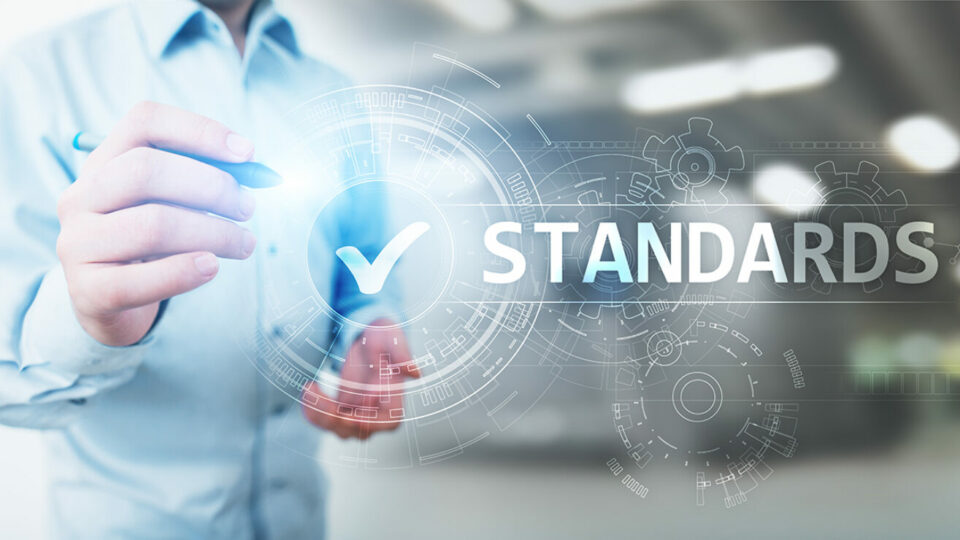Summary Of All Relevant ISOs for BIM In Europe
Building Information Modelling (BIM) is used in the construction industry for the creation and management of information throughout a project.
Europe has adopted certain International Standards (ISOs) as European Standards for BIM. These serve as a guide in the construction industry for organisations using BIM. ISOs facilitate efficient BIM practices through a detailed analysis of object design, construction, operations and maintenance.

Below are all the relevant ISOs for BIM projects in Europe.
ISO 19650
International Standard 19650 has several parts for BIM reference. This ISO was based on the UK standard BS 1192. So, it should be familiar to organisations that were using the British standard for information management in BIM.
Part 1 (Concepts And Principles)
ISO 19650 Part 1 contains concepts and principles for information management at a specific stage of the building process. Here you can find recommendations for an information management framework. This provides clear directions on exchanging, recording, versioning and organisation.
Part 1 of ISO 19650 is relevant to the entire building project. Here, you can find useful information on:
- Strategic planning
- Building design
- Engineering
- Development
- Documentation and construction
- Daily operations
- Maintenance
- Refurbishments and upgrades
- Necessary repairs
- End-of-life processes
This document is quite versatile. It can be adapted to building projects of various scales and complexities. This is particularly helpful when working out potential procurement strategies and implementation costs.
Part 2 (Delivery Phase Of The Assets)
ISO 19650 Part 2 specifies the requirements for information management. It also includes the management process within the delivery phase of the assets. Important exchanges of information using the Building Information Model also appear in this document.
Part 2 of ISO 19650 is an extremely flexible document. It can apply to different types of building projects through a wide range of organisations.
Part 5 (Security-Minded Approach To Information Management)
ISO 19650 Part 5 provides a specification for a security-minded approach to asset management, digital built environments and BIM. It outlines the requirements and principles of secure information management. It also includes guidelines on how to manage classified information that you obtain, develop, or store during a project.
This document serves as a key reference for security measures for BIM projects. It highlights the need to develop a resilient security mindset across various organisations that have access to critical information, including monitoring requirements and audit compliance.
Part 5 of ISO 19650 is an incredibly versatile document. Many types of organisations can use it to help safeguard their intellectual property. This includes commercial and personal information. This ISO is pivotal to organisations that use technology and information management in building projects.
ISO 12006
International Standard ISO 12006 currently has two parts for BIM reference:

Part 2 (Framework For Classification)
ISO 12006 Part 2 pertains to the organisation of information specifically for construction work. It defines a framework that organisations may use for the creation of built environment classification systems. It identifies recommended classification table titles for an array of information object classes with specific views. For example, these could include classifications by form or function.
This ISO can also apply to the development of local classification tables and systems to assist with standardisation.
Part 3 (Framework For Object-Oriented Information)
ISO 12006 Part 3 is relevant to the organisation of information on construction works. It specifies a language-independent information model that is used to create a dictionary. This dictionary stores and provides important information about construction works.
This ISO provides an effective platform that allows classification systems, information models, object models and process models to be referenced from within a shared framework.
ISO 16739
ISO 16739 Part 1 (Data Schema) outlines the Industry Foundation Classes (IFC) meant for data sharing in the facility management and construction industries. IFC’s are an open international standard for BIM data that is usually exchanged amongst software applications used in the industry.
It contains definitions of data required for building projects throughout the whole lifecycle. It also includes definitions of infrastructure assets. The IFC details a data schema and an exchange file format structure for BIM.
So, Part 1 of ISO 16739 of IFC outlines the data schemas and reference data. A subset of these is a Model View Definition (MVD). A specific MVD can be defined to support one or more recognised workflows in the construction industry. Within this, each workflow identifies data exchange requirements for software applications.
ISO 29481
ISO 29481 has two parts that are relevant to BIM:
Part 1 (Methodology And Format)
ISO 29481 Part 1 is a manual for information delivery. It links the business processes used during construction with the relevant information specifications. Additionally, it tracks and describes the information processes of the construction works throughout its lifecycle.
Part 2 (Interaction Framework)
ISO29481 Part 2 helps to define an interaction framework for a project. This framework then helps to track responsibilities and interactions. This ISO intends to allow collaboration and interoperability between various software applications that are used during the construction process.
Overall, this ISO is also useful in promoting digital collaboration amongst key role players in the construction process. It provides a reliable platform for high-quality information exchange.
ISO 21597
ISO 21597 Part 1 (Container) outlines an open container format that allows for the exchange of different files. This is so all information that defines an asset throughout its lifecycle can be delivered, stored and archived. It allows for the easy exchange of information regarding building projects – particularly the exchange of documents and their interrelationships.
ISO/TS 12911
ISO/TS 12911 outlines the technical specifications for the commission of BIM. This applies to all types of buildings, facilities and projects. Information managers use this framework to help structure their BIM guidance documents at any scale. BIM application providers can also use this ISO for guidance on BIM specifications.
The Bottom Line about ISOs for BIM
All of these ISOs contribute to the standardisation of BIM across Europe. By having common datasets, it makes it possible to address Europe specificities and easily distribute data across European countries.



